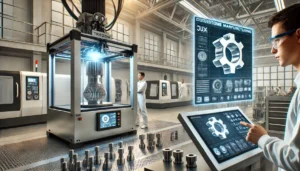Screws, bolts, and rivets are among the most used fasteners that play the most crucial role in construction and manufacturing. It is always important to select the right one as it allows for the joining of materials securely. Proper understanding of its characteristics, types, and usages allows us to use the right fastening tool for any specific project.
Screws
Screws are thread based, self-driven materials that enable joining of multiple tools, surfaces, or materials and making them stick together. The helical thread on the screws turns and allows for the conversion of rotational force into linear motion with the pulling together of the materials which are then secured, ensuring that they stick.
There are various types of screws, each tailored for specific purposes:
- Wood Screws: These screws serve wood fabricating purposes and often come with taper shanks and coarse threads to grip onto wood fibers. They come with sharp points to allow for efficient and easy insertion without needing pre-drilling the surface.
- Machine Screws: These are even set in diameter and uniform in shape serving to be used with nuts or drilled holes on metal or even plastic. Machine screws are common with use in machinery and electronics during assembly.
- Self-Tapping Screws: These screws have sharp threads and are used for metal or plastic enabling for the creation of their own new threads, removing the necessity of pre-drilling.
- Deck Screws: Intended for external decking purposes, these screws have anti-corrosive coatings and usually feature self-drilling points to allow easy penetration into wood without causing it to split.
The type of screw will depend on the materials to be joined, the surroundings, and the amount of holding power required. These factors need to be considered holistically to guarantee structure and durability.
Bolts
Bolts are fasteners that have external thread and are used for insertion into holes in different machined parts. They are usually employed with nuts to join parts together. Unlike screws, bolts do not form threads within the materials. Instead, they depend on the threads of nuts or tapped holes.
Common types of bolts include:
- Hex Bolts: These have hexagonal heads and the bolt of this construction is used for wide ranges of machined parts from building constructions to machines. They are unscrewed with wrenches or screws.
- Carriage Bolts: These bolts possess a domed head and square neck beneath it, which prevents them from turning while being tightened. They are useful for wood connections.
- Anchor Bolts: These bolts are meant for holding parts to concrete. They are sunk into concrete with one end threaded to which the other part is secured.
- Lag Bolts: Also known as lag screws, these are large, heavy-duty fasteners with a hex head and coarse threads, used for wood applications requiring significant holding power.
In addition to material and load parameters, environmental factors should also be taken into consideration when selecting the appropriate bolt. Employment of washers and the appropriate amount of torque is important for a reliable and durable connection.
Rivets
Rivets are permanent mechanical fasteners that are used to connect materials together by deforming one end to keep them in place. One end of the rivets is formed into the head and the other one is a smooth cylindrical shaft. During installation, the tail end is deformed to form a second head that secures the materials in a place.
Different types of rivets are available depending on the application they are used:
- Solid Rivets: The most common type of rivet used in applications that require high strength like construction of aircraft and structural steel assemblies.
- Blind Rivets: These are also called pop rivets, used when the access to the assembly is only possible from one side. It is widely used in automotive and aerospace industries.
- Tubular Rivets: These are easier to install because they have a partial hole at the tail end. They are used in light fixtures and in brakes.
- Split Rivets: These have a split tail that curls backward during setting, anchoring securely in the softer materials such as leather or plastic.
Rivets are ideal for permanent structures that require a strong, unremovable bond. They are designed to withstand high vibrations and join different materials without coming apart.
Choosing the Right Fastener
There are several factors to keep in mind when selecting the best fastener for a given application:
- Material Compatibility: The materials of the fastener should not react with those being mated together as this initiates galvanic corrosion.
- Load Requirements: Identify the tension and shear load strengths acting on the joint and select an appropriate fastener.
- Environmental Conditions: Installation of the fastener must consider exposure to moisture, chemicals or extreme temperatures, suitable fasteners with strong corrosion resistance must be selected.
- Installation Process: Determine the joint’s area of placement and the type of tools available for putting the fastener in position, select fasteners that can be fixed effortlessly while still ensuring maximum strength at the joint.
- Disassembly Needs: In case the joint will need to be opened, use screws or bolts which are easy to take out.
After considering all these points, you can confidently choose the right fastener that would guarantee the security, longevity and efficiency of your assembly.
In summary, different industries rely on screws, bolts and rivets for different purposes, each offering its own unique benefits. It is critically important to have a deep understanding of these components for proper selection to enable use in construction and manufacturing assemblies that are strong, dependable and effective.










